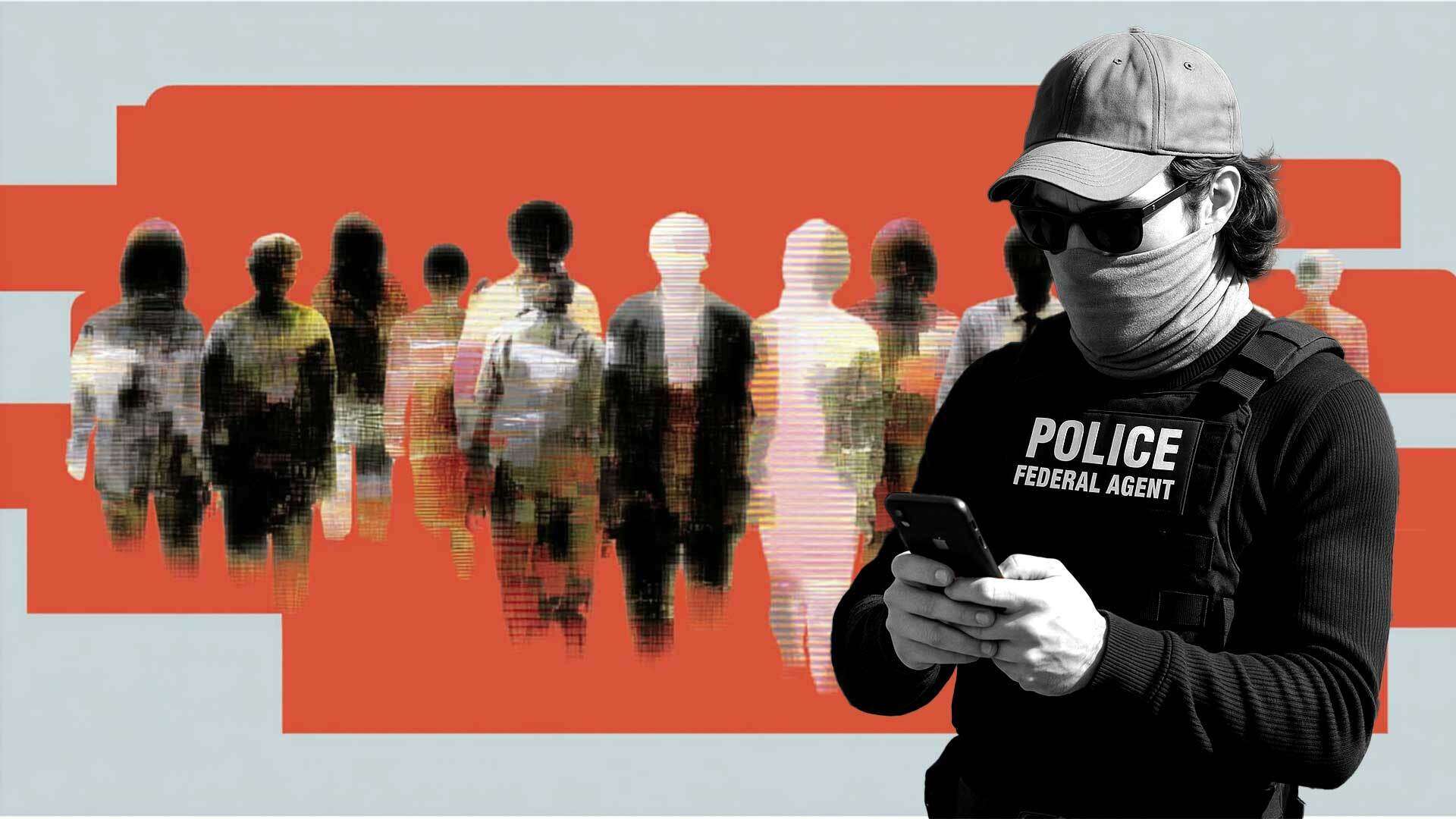More government agencies are using facial recognition for enforcement than ever before.
Immigration and Customs Enforcement (ICE) is using a smartphone app to identify people based on an image of their fingerprints or face, 404 Media reported Thursday, based on a review of internal ICE emails. The expanding and repurposing of this sophisticated technology, ordinarily used by the Department of Homeland Security (DHS) when people are entering or exiting the country, is now being used on people living in the United States to meet mass deportation and arrest quotas imposed by President Donald Trump.
The app, Mobile Fortify, enables users to verify an unknown person’s identity in the field through contactless fingerprints and facial images on ICE-issued phones, according to an email sent to all ICE Enforcement and Removal Operations personnel and obtained by 404. According to the emails, Mobile Fortify can identify a person by comparing a photo of their face across two databases—Customs and Border Protection’s (CBP) Traveler Verification Service database of people’s photos taken when entering the United States, and Seizure and Apprehension Workflow, described by the Department of Homeland Security (DHS) as an “intelligence aggregator” that brings together information related to searches and seizures. For fingerprint matches, the app uses DHS’s centralized Automated Biometric Identification System, which “holds more than 320 million unique identities and processes more than 400,000 biometric transactions per day,” according to the agency.
A report released by the U.S. Commission on Civil Rights in September 2024 attempted to call attention to concerns about accuracy, oversight, transparency, discrimination, and access to justice as facial recognition tools have quickly proliferated. Although facial recognition technology is now available to the public through commercially available tools, policies governing the federal government’s use of the technology have lagged behind real-world applications. Currently, there are no comprehensive laws regulating the federal government’s use of facial recognition technology and no constitutional provisions governing its use.
“Face recognition technology is notoriously unreliable, frequently generating false matches and resulting in a number of known wrongful arrests across the country. Immigration agents relying on this technology to try to identify people on the street is a recipe for disaster,” Nathan Freed Wessler, deputy director of the American Civil Liberties Union’s Speech, Privacy, and Technology Project, told 404 Media. “Congress has never authorized DHS to use face recognition technology in this way, and the agency should shut this dangerous experiment down.“

https://reason.com/2025/06/27/how-dhs-facial-recognition-tech-spread-to-ice-enforcement
